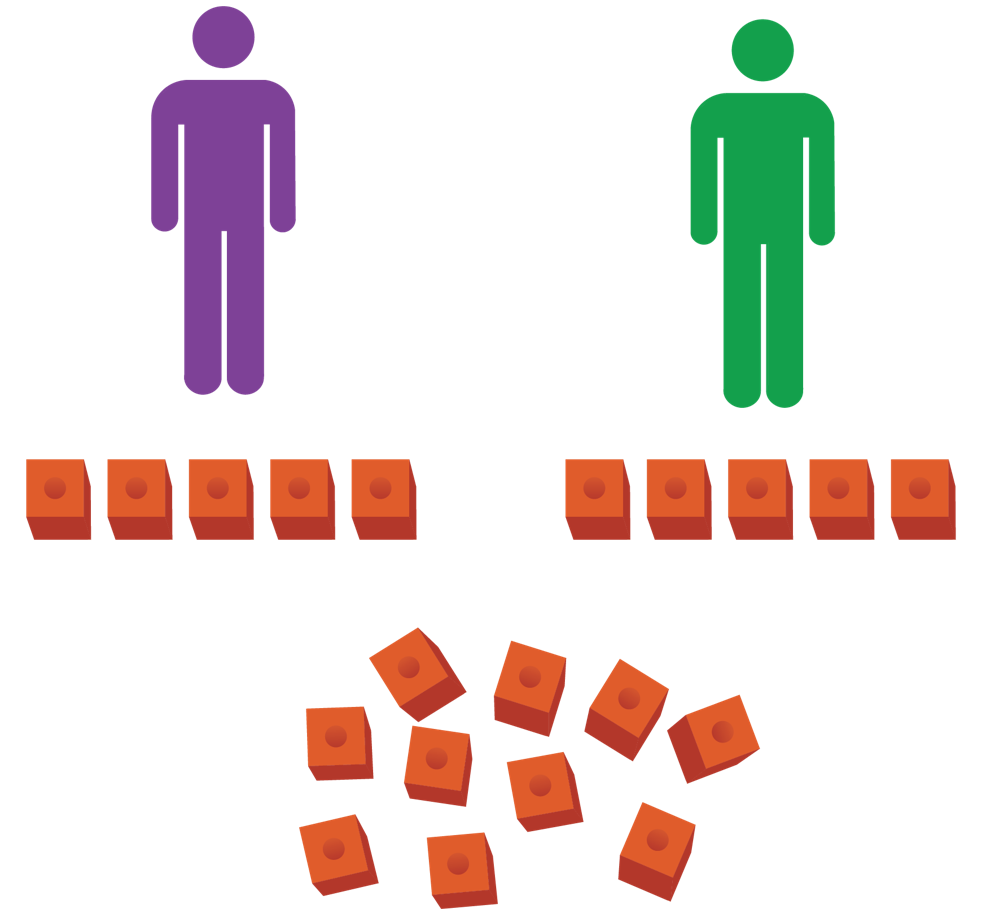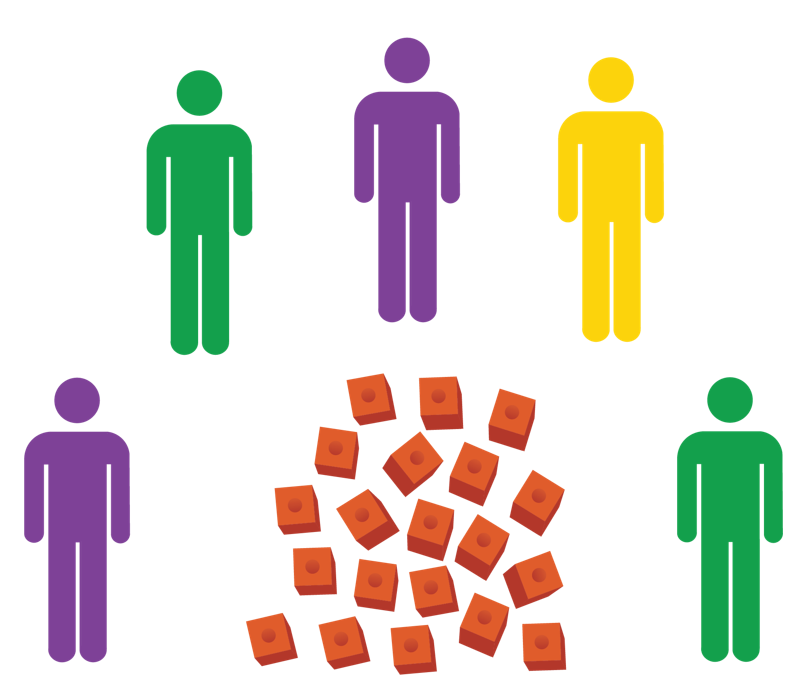Purpose
The purpose of this activity is to support students in using their knowledge of addition (tāpiri) and multiplication (whakarea) basic facts to anticipate the result of equal sharing.
Achievement Objectives
NA3-1: Use a range of additive and simple multiplicative strategies with whole numbers, fractions, decimals, and percentages.
NA3-2: Know basic multiplication and division facts.
Required Resource Materials
- Individual items for sharing (e.g. connecting cubes).
Activity
 Pose problems that involve equal sharing using facts that are readily accessible, for example, multiples of two, five and ten.
Pose problems that involve equal sharing using facts that are readily accessible, for example, multiples of two, five and ten.
Here is a pile of 20 cubes.
If you share the cubes equally with a friend, how many cubes will you get each?
- Encourage students to anticipate the result of the equal sharing before doing any physical modelling. Record anticipations on the board.
How can we work this out without sharing out the cubes?
- Students might suggest additive ways to solve the problem, such as 10 + 10 = 20, meaning the shares will be ten cubes. Others may suggest using 5 + 5 = 10 then 10 + 10 = 20 to progressively build up to sharing 20 cubes.
- Share the cubes equally into two sets and confirm the amounts shared against students' predictions. Discussion might include progressive questions like:
How many cubes has each person got? How do you know?
How many cubes have been used so far?
How many cubes are left to share?
- Demonstrate how the problem could be recorded using equations (e.g. 2 x 10 = 20, 20 / 2 = 10, 1/2 x 20 = 10).
- Discuss what role the symbols play in the context. Draw particular attention to the meaning of ÷ as “shared equally among” and the fraction 1/2 as “one of two parts that make a whole (one).”
What does 2 mean (represent) in the problem? (The number of equal shares)
What does 10 mean in the problem? (The size of the equal shares)
What does the x symbol mean? (It means ‘of’ in the sense that the total number of cubes is made from 2 shares of 10 cubes.)
 Pose similar problems that can be solved with multiples of two, five and ten. Extend students by increasing the size of the numbers used and the level of number knowledge needed to solve each problem. Ensure students have opportunities to work with their peers, supporting and being extended by the thinking of others, and to share their thinking, diagrams, and language with the wider class. Good examples might be:
Pose similar problems that can be solved with multiples of two, five and ten. Extend students by increasing the size of the numbers used and the level of number knowledge needed to solve each problem. Ensure students have opportunities to work with their peers, supporting and being extended by the thinking of others, and to share their thinking, diagrams, and language with the wider class. Good examples might be:- Ten cubes equally shared among five people
- 30 cubes equally shared among ten people
- 20 cubes equally shared among five people
- 20 cubes equally shared among two people
- 50 cubes equally shared among ten people
- As you pose more “equally shared among” problems focus students’ attention on predicting how many cubes will be in each share, before modelling each problem.
What facts will be useful to know?
Can we use multiplication and division to do this rather than adding or counting?
- Progress to providing problems in which the story is given without physical objects and students are asked to anticipate the equal shares, such as:
15 cubes are shared equally among three people. How many cubes does each person get?
Next steps
- Increase the level of abstraction by covering the materials or only providing the story, asking anticipatory questions, and working with more complex facts.
- A suggested sequence for extending the difficulty of the equal shares is:
- Halving problems with even numbers up to 20.
- Sharing among five with numbers up to 20.
- Sharing among ten with decades up to 50.
- Sharing among two with even numbers beyond 20.
- Sharing among five with all multiples of five up to 50.
- Encourage the application of students' basic facts knowledge by presenting them with contextually relevant problems or by asking students to make up similar problems with the use of other relevant materials (e.g. stick figures, animal toys).
Add to plan
Level Three